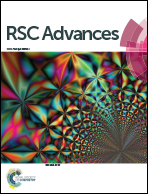Synthesis and visible-light photocatalytic degradation of Ag3PO4/AgBr/hydroxyapatite ternary nanocomposites prepared from oyster shells
Abstract
In this paper, a new type of Ag3PO4/AgBr/hydroxyapatite (HAP) composite was successfully prepared from oyster shells and silver nitrate by a hydrothermal method. The samples were characterized by scanning electron microscopy, X-ray photoelectron spectroscopy, electron spin resonance and other precision instruments, and their catalytic activity was characterized by visible light degradation of methylene blue (MB). The experimental results show that the Ag3PO4/AgBr/HAP photocatalyst has a nanoscale rod-like structure and excellent photodegradation performance. Although the content of Ag3PO4 or AgBr had a significant effect on the reaction activity, the effects did not all positively correlate, and only the appropriate ratio could produce an improved catalytic effect. The catalytic performance of the 1:1-Ag3PO4/AgBr/HAP composite was the best: complete degradation of MB was achieved within 40 min, and the reaction rate was 15 times that of Ag3PO4/AgBr. In the process of photocatalytic degradation, ˙O2− and h+ are the main active species involved in the reaction, and the synergistic catalysis of Ag3PO4, AgBr and HAP promotes the degradation rate.



 Please wait while we load your content...
Please wait while we load your content...